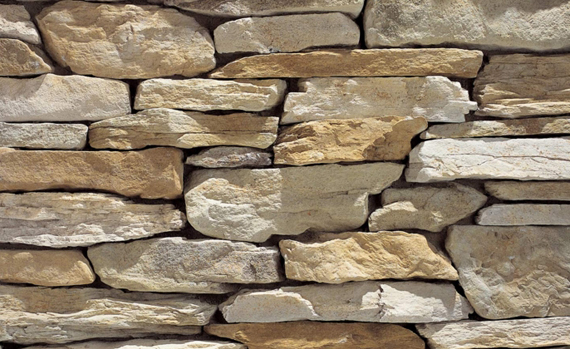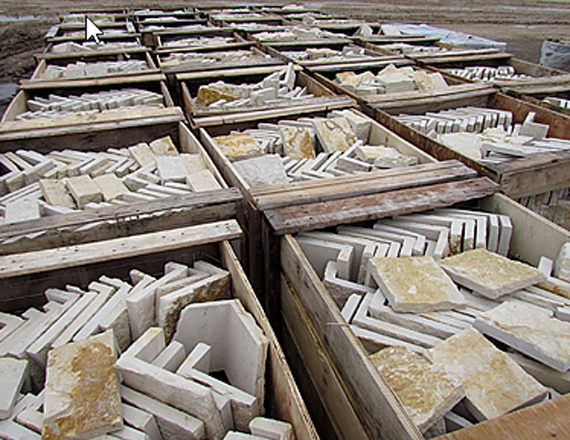
What’s The Best Kind of Exterior Stone Veneer To Use On Your House?
My clients and I talk a lot about the materials we’ll use on the outside of their homes, especially windows, siding, roofing, brick, and exterior stone veneer.
Stone in particular is a frequent topic, because while everyone knows what stone looks like, they aren’t often aware of the wide variety of stone types and colors, and don’t always know “real” stone from “cultured” stone – something that can impact the design of a home from the very beginning.

Stone as a building material dates back to the very earliest days of civilization. The ancient Egyptians, and later Romans, quarried huge quantities of stone for their pyramids, colosseums, roads, and temples.
The art of stone building reached its peak in the Middle Ages with the construction of the great cathedrals of Europe, when, like ancient builders, stone was both the structure and the decoration of buildings.
Today, we rarely use stone as a structural material. Especially on homes, stone is typically a veneer – a relatively thin layer applied over the wall structure. How thin that exterior stone veneer is depends on the type of stone you’re using, and how you’re applying it to the walls.

Full Dimension Stone
“Real” stone is still cut from quarries. The most popular type of full-dimension wall stone used on houses today is limestone. Limestone is very common throughout the eastern United States in hundreds of quarries, each yielding their own particular stone character. When you’re at your local stone dealer you’ll be selecting from a dozen or more types of stone.
Full-dimension wall limestone is usually 4” to 6” thick. Since it weighs around 150 pounds per cubic foot, wall stone must be supported on the building’s foundation by adding a ledge to the foundation design.
Installing limestone takes more skill and effort than other masonry veneers – wall stone is delivered to the building site “rough” – as each piece requires a little hand-shaping before it’s placed, and the irregular sizes must be artfully fitted together.
The result of this additional effort and skill, however, is an attractive stone wall that looks solid, permanent, and not like a “veneer” at all.

Natural Thin Veneer Stone
This is also “real” stone, but machine-cut to about an inch thick. At a tenth of the weight of full dimension limestone, thin veneer doesn’t require a foundation ledge to support it – the weight of the stone is carried by the wall itself.
Thin veneer is installed directly on the wall with mortar, essentially “gluing” it to the wall. It’s easier and faster to install than full dimension stone, costs less, and in the hands of skilled installers, can come close to the look of full dimension stone.
The key here is “skilled installers” – install it improperly – especially at corners and openings – and you won’t get the effect of “real” stone at all.

Cultured Stone
A relatively new product, “cultured” stone is an exterior stone veneer made by mixing cement and colored stone dust in molds made from real stone. Since it doesn’t come from quarries, cultured stone manufacturers can mimic any type of real stone, even textures, colors, and styles that aren’t available from local quarries.
Cultured stone is installed the same way thin veneer stone is without the need for a special foundation ledge. Like thin veneer, the success of a cultured stone installation depends on the skill of the installers. Get it right, and it can fool a discerning eye into thinking it’s real stone.
What’s Best For You?
Each of these materials has its place in homebuilding, but those places aren’t always interchangeable. Regular readers of my blog know that I prefer honesty in building materials whenever possible, and honesty in the use of the various kinds of stone veneer is no exception.
Real, full-dimension stone is expensive to buy and to install properly. If you want a stone house, but can’t afford real stone, then – in my opinion – you can’t just switch to thin veneer or cultured stone instead. Maybe a combination of materials – wood siding, with some areas of real stone for example – is better for your project.
But if your design and budget calls for the very best, “real”, full dimension stone might be for you.
Thin veneer and cultured stone, on the other hand, are best suited for applications where a foundation ledge is impractical – an existing foundation, for example, or a chimney that extends through the middle of a roof. Detailing the change from siding to stone, or from roofing to stone is critical in both of these situations.
They’re also great for interior applications – around a fireplace, or on the walls of a wine cellar. But keep honesty in mind here again – don’t use thin veneer or cultured stone as simply a wall decoration, or in places where real stone would never be used.



I love the look of veneer stones built into homes, so thanks for sharing this. My wife and I are wanting to add some of these to the front of our house this summer. I like the idea of using natural stones and “gluing” them directly to the wall. We’ll have to look into this more so we can get started right away.